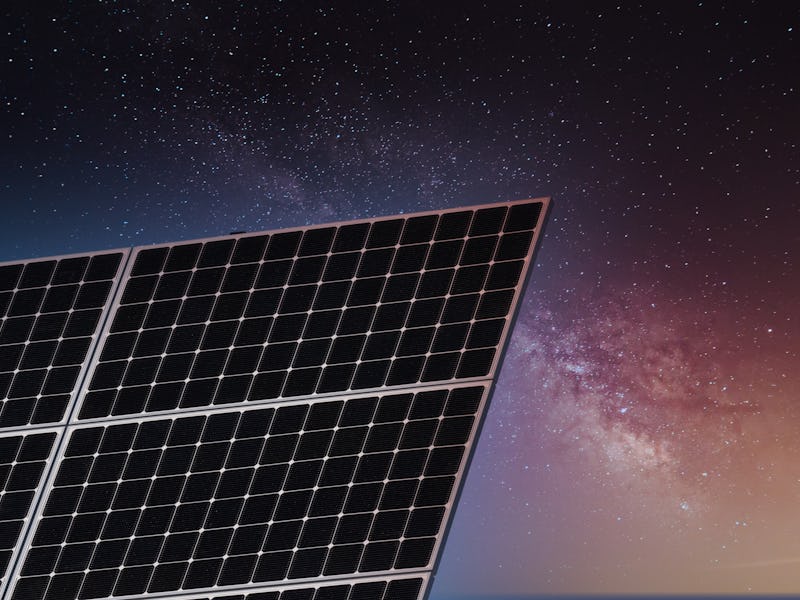Anti-solar panel can generate electricity at night, researchers say
In order to develop solar panels that generate electricity at night, you just need them to operate in the exact opposite way solar panels work during the day.

One of the problems with solar panels is that they don't generate electricity at night, so we have to store the electricity they generate during the day to power things during the evening. That works fine, but what if we could develop solar panels that did generate electricity at night? It's possible, and the way it works is pretty surprising.
Researchers from the University of California, Davis explain in a new paper that was just published in the journal ACS Photonics that if you want to create a solar panel that generates electricity at night, then you just have to create one that operates the exact opposite way solar panels work during the day. It's being referred to as the "anti-solar panel."
Solar panels are cold compared to the Sun, so they absorb the Sun's light and turn it into energy. Space is very cold, so if you point a panel on Earth that is comparatively warm toward it, it will radiate heat as invisible infrared light. This allows you to generate electricity by capturing that power. The paper claims such a device could generate about a quarter of the electricity at night that a normal solar panel generates during the day.
Jeremy Munday, a professor in the Department of Electrical and Computer Engineering at UC Davis who is an author of the paper, tells Inverse that whether it's a solar panel or this anti-solar panel, these things are essentially just "heat engines."
"You have heat energy coming from the Sun towards the Earth and that normal solar cell picks off that energy as it's transmitted from the Sun to the Earth, so basically you need these two different temperature bodies and some way of converting that power," Munday says. "What this nighttime device does is a similar sort of thing—where it's just taking a hot body and a cold body—but now the relatively hot body is the Earth and space is the cold body. As this heat is flowing from the Earth to outer space, it's picking that off and converting that into power."
This kind of device uses what is called a thermoradiative cell to generate electricity, as opposed to the photovoltaic cell used by a conventional solar panel. Where a solar panel is typically made of silicon, which is good at capturing light that's largely in the visible spectrum, this device has to be made of something that can capture extremely long wavelength light. Munday is currently looking at mercury alloys that would be good for this.
Munday and his team are currently working on developing prototypes to see how well they can make this concept work.
See also: A 200-year-old technology could help millions living off the grid
Other researchers are also looking into how to make solar panels, or "anti-solar panels," that generate electricity at night. Researchers at Stanford published a paper in the journal Jouele in November showing how a thermoelectric generator that radiates heat to the sky can generate electricity.
"Unlike traditional thermoelectric generators, our device couples the cold side of the thermoelectric module to a sky-facing surface that radiates heat to the cold of space and has its warm side heated by the surrounding air, enabling electricity generation at night," the paper reads.
Our batteries have been slowly getting better for years, and so have our solar panels, so we don't necessarily need solar panels that can generate electricity at night to meet our energy needs. However, if we can devise a system that can generate clean energy 24 hours a day, we could possibly produce more energy than we need and store it for various purposes, such as an emergency. It's better to have too much energy than to come up short.
Abstract: Photovoltaics possess significant potential due to the abundance of solar power incident on earth; however, they can only generate electricity during daylight hours. In order to produce electrical power after the sun has set, we consider an alternative photovoltaic concept that uses the earth as a heat source and the night sky as a heat sink, resulting in a “nighttime photovoltaic cell” that employs thermoradiative photovoltaics and concepts from the advancing field of radiative cooling. In this Perspective, we discuss the principles of thermoradiative photovoltaics, the theoretical limits of applying this concept to coupling with deep space, the potential of advanced radiative cooling techniques to enhance their performance, and a discussion of the practical limits, scalability, and integrability of this nighttime photovoltaic concept.